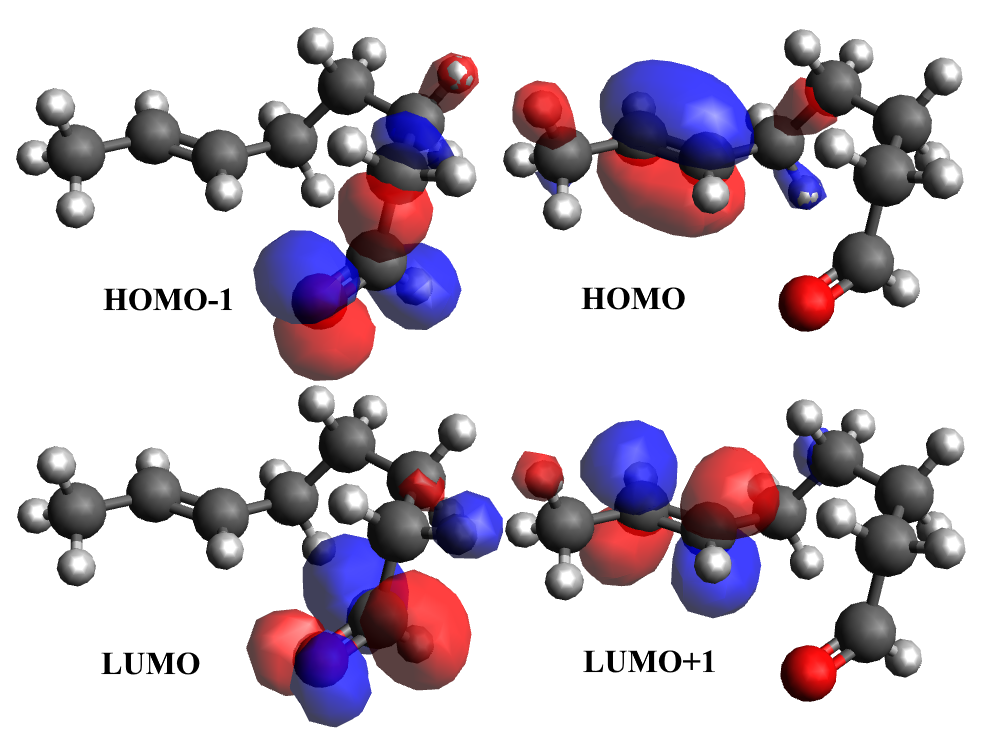First of all, a molecule only has one HOMO and LUMO. Don't confuse MOs with localized orbitals from VB theory.
You can basically approximate this mechanism with four MOs:
- LUMO+1: Mainly $\pi^*_{C=C}$ with contributions from $\sigma^*_{C-H}$
- LUMO: Mainly $\pi^*_{C=O}$
- HOMO: Mainly $\pi_{C=C}$ with contributions from $\sigma_{C-H}$
- HOMO-1: Mainly $p_O$ with contributions from $\sigma$-orbitals on the carbonyl carbon. We can regard this MO as one of the lone pairs of the oxygen.
The corresponding interactions will roughly look like this:

Hence, the HOMO - LUMO interaction explains the C-C bond formation, while the HOMO-1 - LUMO+1 interaction explains C-H bond breaking and O-H bond formation. Both HOMO and LUMO+1 also explain the shift of the double bond.
Now to your question:
- Q1: Yes, $\sigma_{C-H}$ is part of HOMO, but has a lower contribution compared to $\pi_{C=C}$. So I would mainly call the C=C bond as donor. As you can see $\pi_{C=O}$ is not part of the FMOs, so your proposal makes little sense. It mainly contributes to more stable occupied MOs.
- Q2: If I understand correctly, you propose an antarafacial [2+2], which is in principle symmetry allowed, but would lead to a very strained transition state with a high barrier. You are free to swap the sings on MOs, but as soon as interact with another MO, you take the one that leads to stabilization of course.
Edit: As reference, I got the FMOs from a HF/6-31G calculation on a slightly simplified system:




